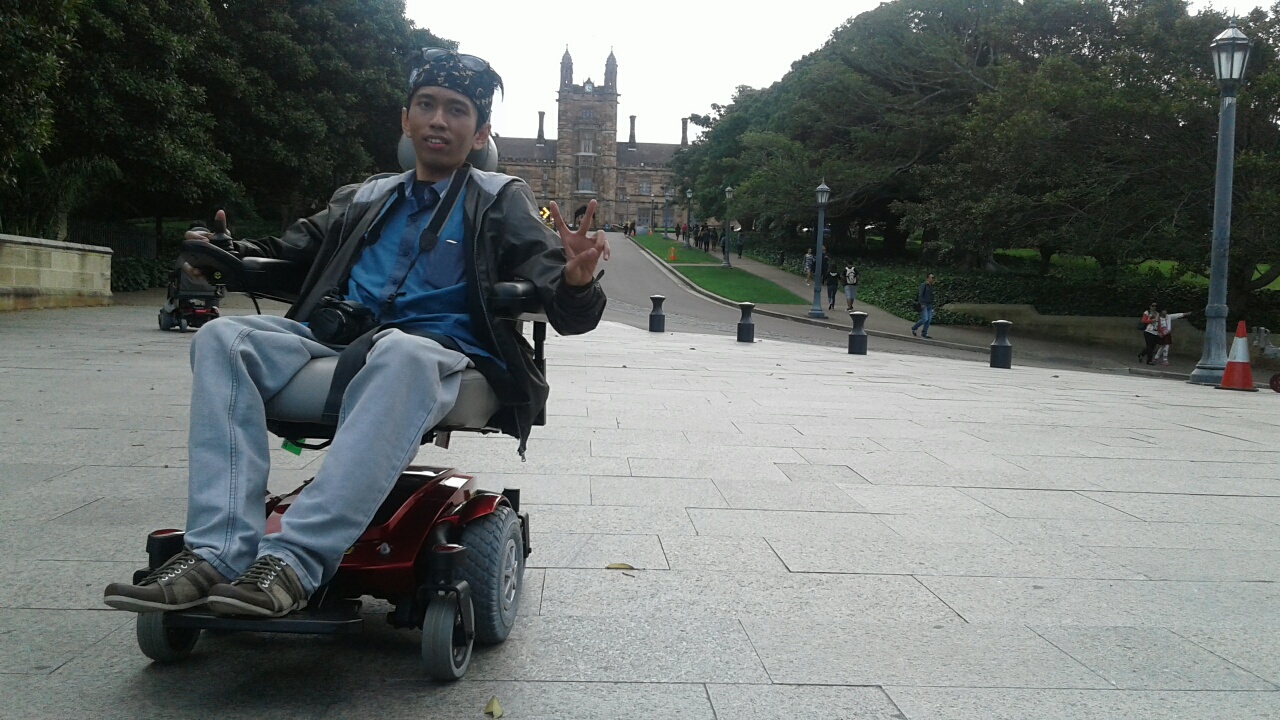
05 December 2025
Join Our Scholarship Information Session for Prospective Applicants from Equity Target Provinces
Have a strong interest in pursuing a Masters or PhD degree in Australia? Australia Awards Scholarshi... Read more
The Australia Awards are prestigious, transformational scholarships and short courses offered to emerging leaders for study, research and professional development in Australia

15 April 2016
 A Disability Friendly City and Public Space Accessibility
A Disability Friendly City and Public Space Accessibility
The streets are the most accurate portrayal of the reality of public space—the reality of public behaviour as well as the availability of facilities and public space by the government. Our government sometimes forgets to grant pedestrians their rights. It could also be that the public themselves does not care enough about their accessibility to walk.
The city of Sydney grants the rights of its pedestrians. The curbs are wide without any obstructions, there are no trees in the middle of a walkway. The lack of obstruction also facilitates people with disability to freely move independently.
The lights at crosswalks are equipped with sound to provide accessibility for the visually impaired. At certain intervals, the curbs are equipped with signs or symbols to provide information, in addition to being equipped with Braille. When a curb turns into an incline, stairs or different direction, there is a round guiding block symbol that serves as warning, making it accessible for the visually impaired. I tried to manoeuvre around Sydney—all the curbs meet accessibility standards.
The bus serves as the most common mass transportation used by the general public. This includes the public with disability as the buses in Sydney are already accessible. I got to experience the ease of taking a bus fitted with hydraulics. The bus can be lowered almost parallel to the curb. A ramp can be extended out from the bus to facilitate the wheelchair in. The bus also has space for a maximum of two wheelchairs.
I experienced similar ease when I boarded a train. From the entrance to the exit, it was so easy to go about with accessibility such as entrance/exit lanes to and from the station, elevators and restrooms at the station. When a person with disability is about to board a train, an officer will immediately bring a portable ramp over so that the wheelchair user can easily enter the train. And just as there is on the bus, there is room for wheelchairs in the carriage, which is also equipped with accessible information. The same can be said regarding sea transportation. It is very easy to board a boat as an entrance onto the boat is provided without one having to be carried off the wheelchair. Accessible restrooms are also available on board.
Not all taxis are wheelchair accessible, but a few taxi companies already have accessible taxis in the form of vans to facilitate passengers on wheelchairs without the passengers having to get out of the wheelchair. The back of the van is fitted with hydraulics to get the wheelchair into the taxi. Meanwhile, the interior is equipped with a lock to hold the front and back wheels of the wheelchair to ensure the safety of the passenger in it. The van is also equipped with a seatbelt across the stomach.
The hindrance-free experience I had was not only through physical accessibility, but also through the attitudes of the officers, from the taxi drivers, bus drivers to the officers working in public transportation who are equipped with knowledge on how to assist people with disability. I gathered that information when I asked the taxi driver during our chat.
My visit in Sydney was indeed short, but it left me with a memorable experience. My experience in Sydney proves that accessibility can be realised. As an Indonesian, I have the right to hope and create a breakthrough in providing the same opportunities for people with disabilities and true accessibility in my own country.
The original article appeared in www.solider.or.id. Translated and republished by Australia Awards in Indonesia with permission from the author.

Share this news on:
 Related News
Related NewsThis website uses cookies to improve your website experience. We may also use cookies to analyse website data so that we can improve our online services. To find out more visit our privacy policy.
